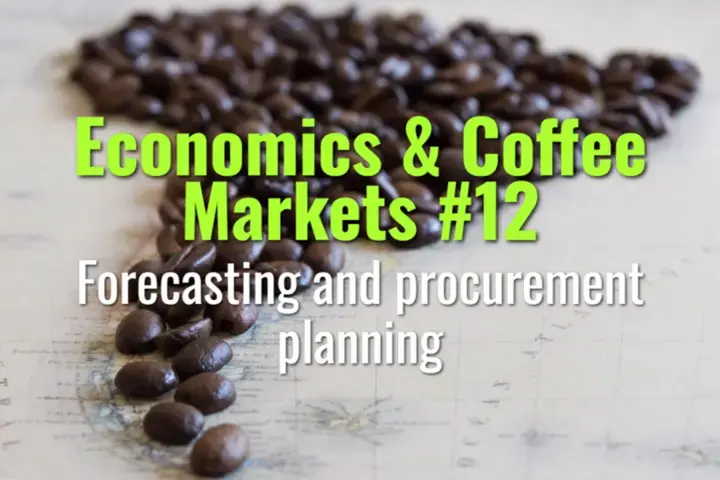Forecasting and procurement planning
How forecasting and procurement planning help roasters and importers manage inventory, cash flow, and long-term supplier relationships in a volatile coffee market.
- Coffee Basics Nerds
- 2 min read
Article 12 of 12 in Economics & Coffee Markets/

Why Forecasting Matters
- Coffee demand is seasonal and volatile.
- Overbuying ties up cash and risks staling; underbuying risks stockouts and losing customers.
- Accurate forecasting aligns supply chain stability with financial health.
Forecasting Approaches
- Historical Sales Data:
- Track monthly/seasonal demand trends.
- Adjust for new product launches or café openings.
- Growth Projections:
- Factor in marketing campaigns, wholesale contracts, or new locations.
- Seasonality Adjustments:
- Cold brew demand spikes in summer.
- Holiday retail peaks in winter.
- Market Intelligence:
- Watch C-market trends, harvest reports, shipping delays.
Procurement Planning
- Contracting Strategy:
- Mix of spot purchases and forward contracts.
- Specialty buyers often lock in micro-lots while using spot for flexible blends.
- Inventory Targets:
- Set minimum and maximum stock levels (e.g., 2–3 months green supply).
- Monitor turnover to prevent aging.
- Supplier Coordination:
- Share demand forecasts with producers/exporters for better alignment.
- Build trust via multi-season planning.
- Cash Flow Management:
- Align procurement with budget cycles.
- Consider financing tools (letters of credit, importer credit terms).
Example Workflow
- Historical monthly demand: 10,000 lbs.
- Forecasted growth: +15% next year → 11,500 lbs/month.
- Procurement plan: Contract 70% of forecasted volume forward, leave 30% for spot flexibility.
Risks in Forecasting
- Market shocks (frosts, shipping crises).
- Currency swings.
- Consumer preference shifts (toward decaf, RTD, etc.).
- Mitigation: Use rolling forecasts updated quarterly.
Summary
Forecasting and procurement planning are critical for balancing supply, demand, and financial stability. By combining data analysis, supplier communication, and flexible contracting, roasters and importers can secure coffee while adapting to market uncertainty.